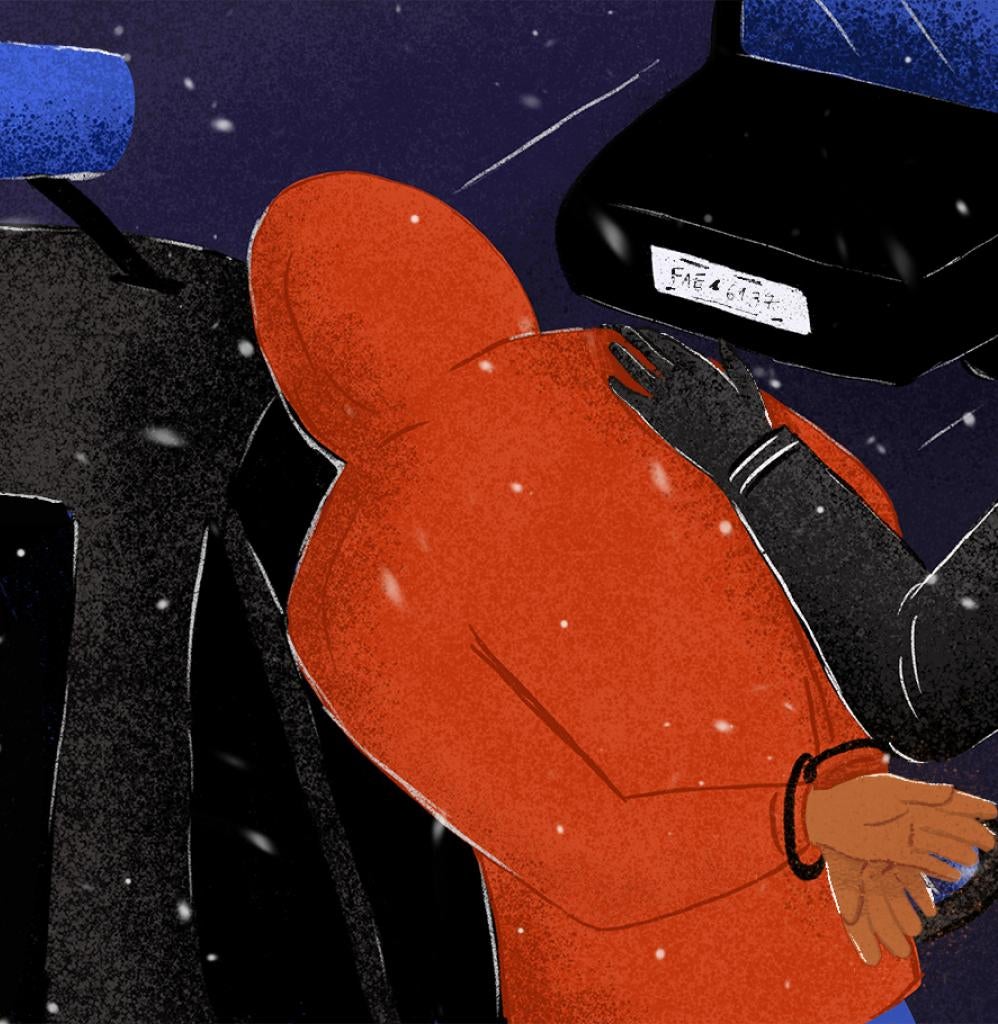Arrested
The next day, you are driving to work when you hear a police siren directly behind you. Getting out of your car, you’re ordered to put your hands in the air and told that you’re under arrest. The officer arrests you and brings you to jail for booking.

Automated license plate readers (ALPRs)
Automated license plate readers (also sometimes called automatic number-plate recognition) use cameras to capture license plate numbers, then digitize those images and upload them into a database searchable and shareable by law enforcement. Police and other law enforcement agencies use them to track a vehicle’s travel patterns.

